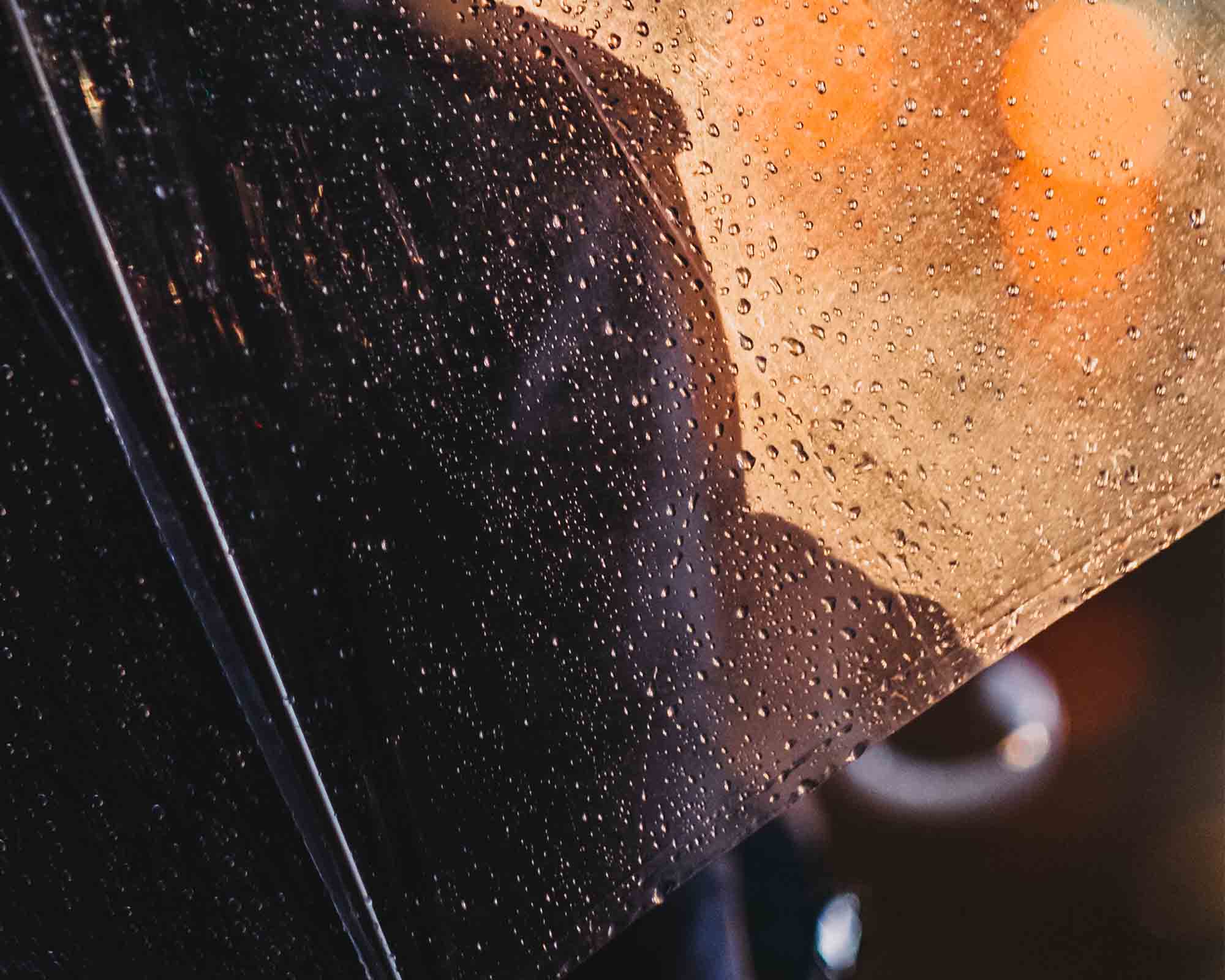PVC might bring to mind hard plastic you spot around the home, but it’s also a flexible fabric found in clothing and accessories with much to answer for on the sustainability front.
Plastic in your wardrobe
PVC. It’s that hard plastic piping you can see under your kitchen sink, right? What’s it got to do with sustainable fashion?
The first thing to know about PVC, or polyvinyl chloride, is that it’s everywhere, in and around our homes, cars, and wardrobes. It can be manufactured as a hard material or a flexible fabric, sometimes known as Vinyon in the US. You’ll most likely find it in a faux leather coat. But given that it’s another form of plastic, how sustainable is PVC for your wardrobe? Let’s break it down.
What is PVC, and how is it made?
PVC is made by reacting chlorine, carbon, and ethylene (a petrol product) together to create a compound called Vinyl Chloride Monomer, or VCM. The VCM then undergoes a process called polymerisation, which results in a base PVC. The base PVC looks like a white powder or pellet, which is then ready for one of a suite of additives that transform the material into its desired shape and texture, ie underground pipe, window frames, pencil cases, or clothing.
Transforming base PVC into clothing requires plasticisers, usually phthalates, which are clear, oily liquids that help the plastic go soft and flexible enough to simulate a textile.
Quite simply, PVC is a petrochemical product that is heavily processed from start to finish and can take many forms. Vinyon, as the textile derivative of PVC, is popular for its weather-resistant qualities in coats, jackets, skiing equipment, artificial leathers, or fetish fashion.
So what are the environmental and ethical costs?
Whether you’re a savvy conscious shopper or new to the movement, you likely have an inkling that any fibre made with petrochemicals is generally an unsustainable choice. You’d likely find PVC or Vinyon at the lowest tier of any materials index if they get a mention at all—the (now obsolete) Made-By Benchmark for Fibres doesn’t even list PVC or Vinyon in their matrix of assessable fibres.
PVC requires oil to extract the base components and lots of energy to react the chemicals together. That means it’s hugely reliant on fossil fuels—which we as a society are desperately trying to turn our backs on. Couple that with the potential health risks of phthalates and the overwhelming pressure of plastic waste on our oceans, and you have one of the most unsustainable materials on the market.
There are also ethical concerns. While the use of PVC and other leather alternatives prevents direct harm to animals, explains Sewport, animal life is ironically harmed by the steady accumulation of this non-biodegradable material in the world’s ecosystems. This harm extends to humans, who are ingesting plastic through food and other sources in the form of microplastics.
The bottom line is, for a more sustainable and ethical wardrobe, avoid PVC.
What are the alternatives to PVC?
Recycled PU
While similar to PVC in composition, PU is less harmful in production since it doesn’t release toxic substances and dioxins during use or disposal. But while it is technically a better option than PVC, virgin PU is far from perfect. Luckily, it can be made from recycled sources, which assists with waste reduction and making use of already available resources, so it’s a decent alternative—especially for garments that don’t require much laundering to mitigate microplastic release.
Natural rubber or latex
Believe it or not, natural rubber or latex (as opposed to synthetic rubber) used to be the go-to material before PVC came along. Natural rubber comes from trees found mainly in parts of South America, Africa, and South East Asia. Rubber trees are “tapped” to extract the milky-white latex fluid and left to repair over a period of months or years. Natural rubber is free from the chemical load of PVC and performs just as well, especially for water-resistant applications. Just be aware that natural rubber can be linked to deforestation, so look for products that uphold responsible production processes.
MIRUM®
An exciting new material on the market is MIRUM®. Completely plastic-free and certified as 100% bio-content through the USDA bio-preferred program, it is made from a combination of plants and minerals. The resulting material is adaptable and suitable for use in footwear, fashion, automotive, accessories, upholstery, and more.
Cork
It may come as a surprise to learn that cork is an alternative material increasing in popularity thanks to its leather-like properties. This sturdy and waterproof leather alternative is renewable, completely recyclable, and easy to keep looking good as new. Cork oak trees are harvested for their bark each decade, but the trees continue to live and grow, going on to produce more cork, so it’s a more sustainable option for people, the planet, and animals.




















